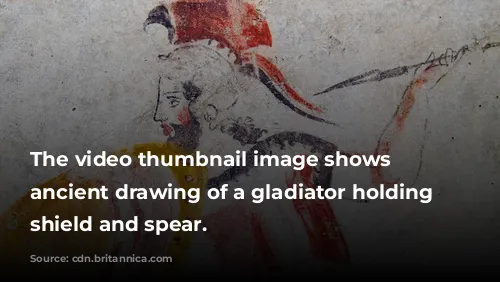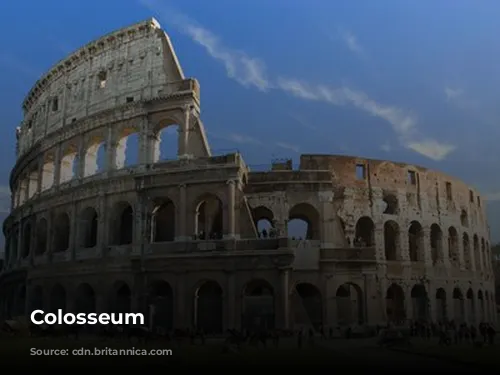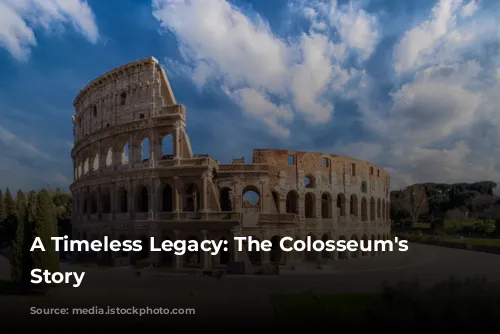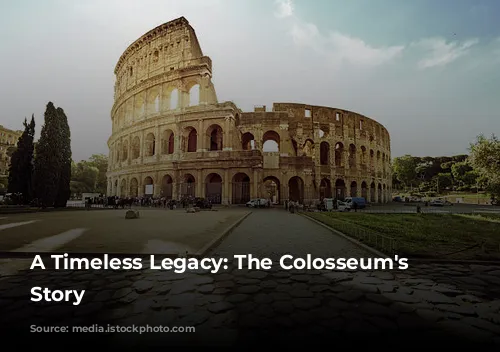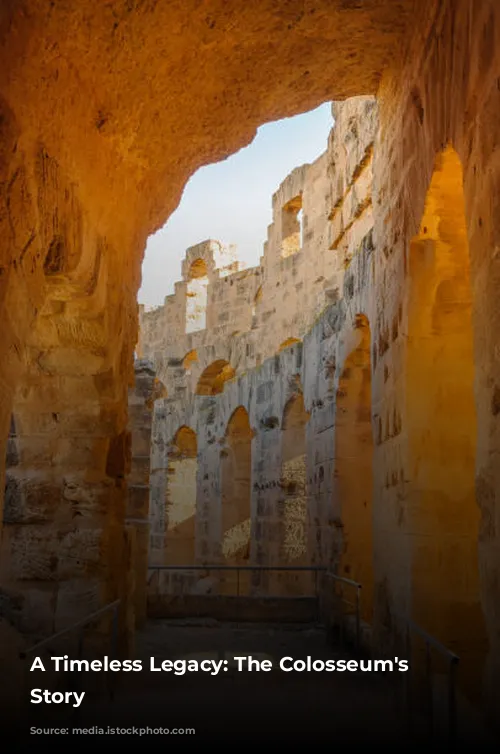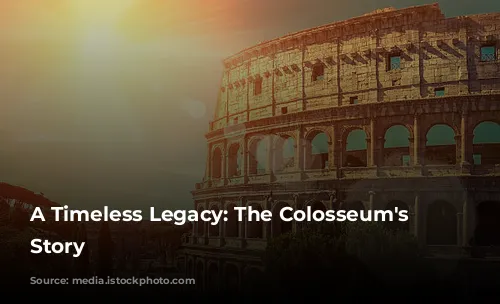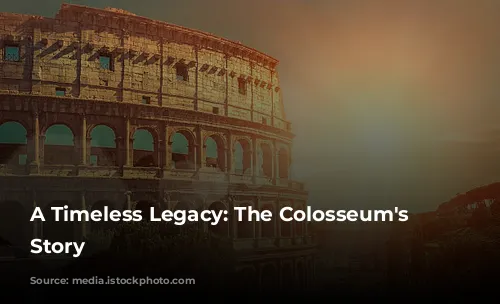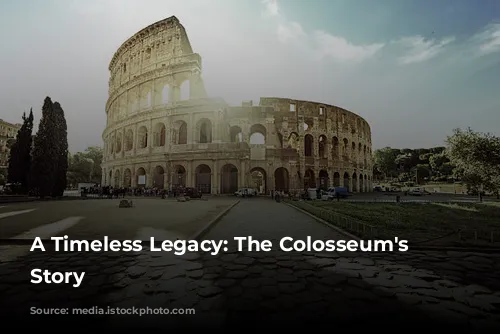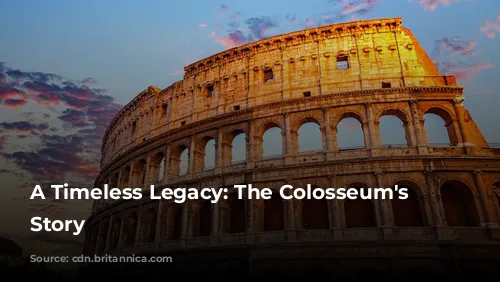The Colosseum, a monument to ancient Rome’s architectural brilliance, continues to captivate visitors today. Its grandeur, a testament to the engineering prowess of the Romans, stands as a reminder of a bygone era. More than just a historical landmark, the Colosseum is a major economic engine for Italy, attracting millions of tourists each year. In 2018, the Colosseum, alongside the Roman Forum and Palatine Hill, generated over $63.3 million (€53.8 million), solidifying its position as the most visited tourist attraction in Italy.
From Gladiator Arena to Fortress and Quarry
The Colosseum’s journey through time has been a rollercoaster of transformation. Following the fall of the Western Roman Empire, this architectural masterpiece fell into disrepair. The once-grand arena became a symbol of neglect, its purpose forgotten amidst the chaos of a changing world.
In the 12th century, the Colosseum was repurposed by powerful families as a fortress, providing a sense of protection during a tumultuous period. The arena, once a stage for gladiatorial combat, became a battleground of a different kind, its walls echoing with the footsteps of soldiers and the clang of weapons.
The Colosseum’s fate took a turn in the late 15th century. Pope Alexander VI, seeking materials for his own projects, permitted the Colosseum to be used as a quarry, a heartbreaking act that stripped away its beauty. For over a thousand years, this symbol of Roman might was neglected, slowly crumbling under the weight of time and human indifference.
A Symbol of Imperial Power
The Colosseum’s construction was a bold statement of imperial ambition, marking a period of revitalization after the turbulent reign of the four emperors. Emperor Vespasian, seeking to restore Rome’s glory, envisioned the Colosseum as a spectacle, a place where the Roman people could be entertained and their loyalty solidified.
The Colosseum was more than just a venue for entertainment; it was a stage for the imperial narrative. Gladiator fights, animal hunts, and mock naval battles, all performed within the arena’s walls, served as a reminder of Rome’s military power and its ability to control even the natural world.
Building a Monument to Roman Might
The Colosseum’s construction began under the reign of Vespasian, between 70 and 72 CE. This monumental project, completed in 80 CE by Vespasian’s son and successor, Titus, was a marvel of Roman engineering. The fourth story, a testament to the ambition of Emperor Domitian, was added in 82 CE, further enhancing the Colosseum’s grandeur.
It’s important to note that the Colosseum’s construction was funded with spoils from Titus’s conquest of Jerusalem in 70 CE, and enslaved Jews from Judea were forced to labor on this project. The Colosseum, a symbol of Roman power, was built on the backs of those who were subjugated by the Roman Empire, a stark reminder of the complex realities of history.
An Architectural Masterpiece
The Colosseum stands as an enduring testament to Roman architectural ingenuity. An elliptical structure, built from stone, concrete, and tuff, it rises four stories tall, measuring a colossal 620 by 513 feet (189 by 156 meters). Its imposing presence could accommodate up to 50,000 spectators, making it one of the largest amphitheaters ever built.
The Colosseum’s construction was a feat of engineering. Unlike earlier amphitheaters, which were built into hillsides for support, the Colosseum is a freestanding structure, relying on a complex system of barrel and groin vaults to hold its massive weight. The exterior is adorned with three tiers of arcades, each featuring columns in the Doric, Ionic, and Corinthian orders, reflecting Roman architectural principles. The Colosseum’s design, with its rising columns and intricate details, laid the foundation for architectural styles that would influence generations to come.
A Spectacle for the People
The Colosseum was more than just a building; it was a spectacle for the people of Rome. A retractable awning, known as a velarium, provided shade for the spectators, allowing them to enjoy the events within the arena without being exposed to the harsh sun. Hundreds of Roman sailors were needed to manipulate the velarium’s rigging, showcasing the scale of the spectacle.
The Colosseum hosted a wide variety of events, from gladiatorial combat to animal hunts and mock naval battles. While the Colosseum’s role in the martyrdom of early Christians is uncertain, there’s no doubt that this arena was a stage for power and spectacle, shaping the lives of the Roman people.
From Neglect to Preservation
As the Roman Empire declined, the Colosseum faced neglect and destruction. Used as a church and a fortress by powerful families, it was damaged by natural disasters and the ruthless hands of vandals. The Colosseum, stripped of its marble seats and decorative materials, became little more than a quarry, its grandeur slowly eroding under the weight of time and neglect.
The 19th century saw a shift towards preservation. Notable efforts by Pope Pius VIII helped to raise awareness of the Colosseum’s significance. A major restoration project, launched in the 1990s, has helped to restore this architectural marvel to its former glory. Today, the Colosseum stands as one of Rome’s most popular tourist attractions, welcoming millions of visitors every year. Regular exhibitions, exploring the culture of ancient Rome, keep this monument alive, ensuring that the Colosseum’s legacy will endure for generations to come.
Conclusion
The Colosseum, a monument of enduring power and grandeur, embodies the triumphs and tragedies of ancient Rome. Its history, a tapestry woven from gladiatorial combat, imperial ambition, neglect, and ultimately, preservation, reminds us of the cyclical nature of power and the lasting impact of human ingenuity. Standing as a symbol of Roman might, the Colosseum continues to inspire awe and wonder, offering a glimpse into a world long past and a timeless reminder of the enduring legacy of the Roman Empire.

